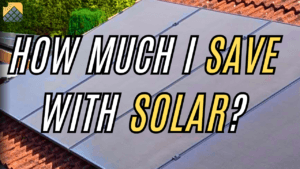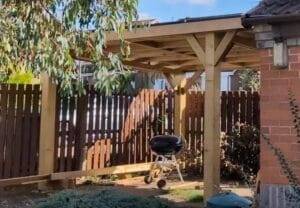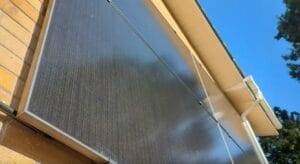Solar energy has emerged as a beacon of hope in a world of climate change and ever-increasing energy costs. However, despite the growing enthusiasm, several concerns linger in homeowners’ minds considering the switch. This article examines these concerns and explores potential solutions and limitations.
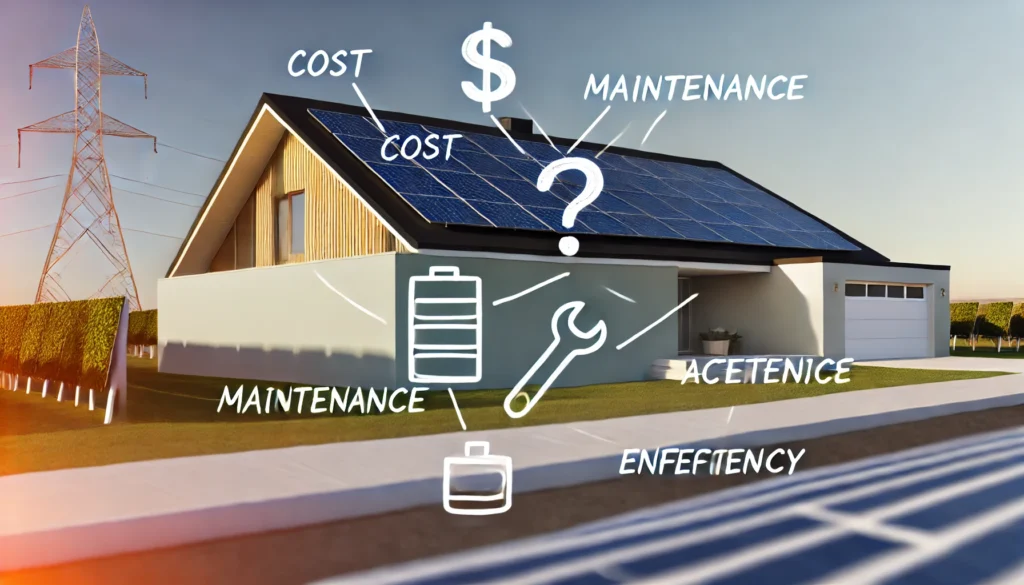
1. Avoiding Solar Because of High Initial Costs: A Barrier to Entry
One of the most significant hurdles to solar adoption is the substantial upfront investment required. Solar panel installations can cost between $10,000 and $25,000, depending on system size, panel type, and installation complexity. This considerable upfront cost can be a deterrent for many homeowners despite the allure of long-term savings.
Strategies for Overcoming:
- Government Incentives: Numerous financial incentives, including tax credits, rebates and subsidies, are offered at the federal, state and local levels to make solar installations more affordable. Exploring these incentives can significantly reduce out-of-pocket expenses. Solar and battery installations are exempt from VAT in countries like the UK.
- Financing Options: Various financing options, such as loans, leases and power purchase agreements (PPAs), are available to spread the cost of solar installations over time, making them more manageable for homeowners. It’s always worth checking with a local authority for the latest availability.
When Installation Becomes Unviable:
- Limited Budget: Even with available incentives, the high upfront costs of solar installations can be impossible for homeowners with strict budget constraints and restricted access to financing.
2. Avoiding Solar Because of Weather Dependency: The Intermittency Issue
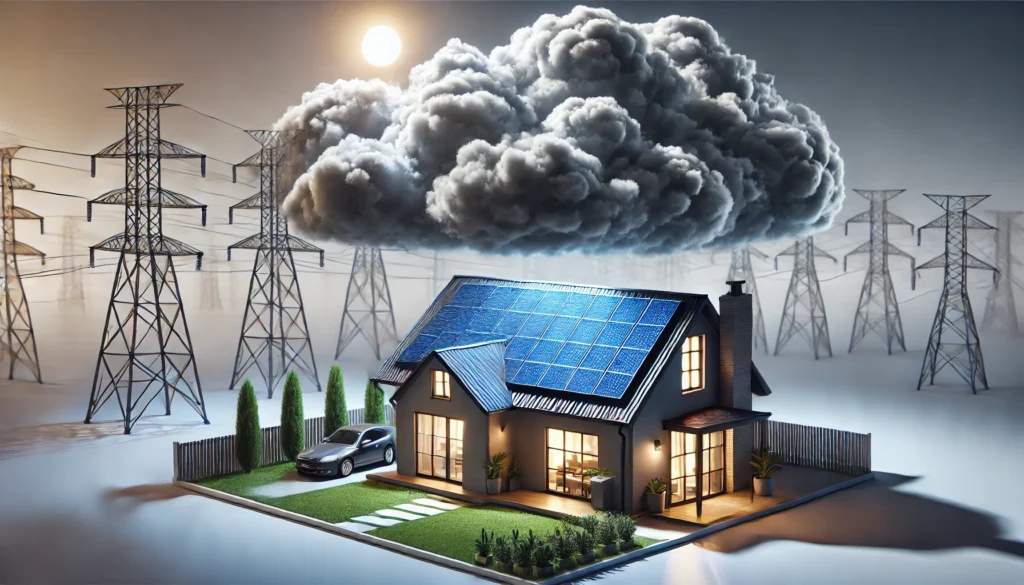
Strategies for Overcoming:
- Energy Storage Systems: Using battery storage systems can offset the intermittency of panels’ production. A battery can collect excessive energy during the day and provide backup power during nighttime and cloudy periods, enhancing energy independence and ensuring a consistent electricity supply.
- Net Metering: In some areas, utility companies offer net metering programs, enabling homeowners to sell excess solar energy back to the grid during sunny periods, offsetting the power drawn from the grid during low solar production.
When Installation Becomes Unviable:
- Unfavourable Net Metering Policies: In regions with limited or unfavourable net metering policies, the economic benefits of solar energy generation can be diminished, making it less appealing for homeowners.
- High Battery Storage Costs: While battery technology advances, energy storage costs remain a significant investment. Relying solely on solar energy might be impractical for homeowners in areas with less frequent power outages or those unable to afford batteries.
3. Avoiding Solar Because of Energy Storage Costs: Adding to the Expense
Batteries are an expensive component, the linchpin of a reliable solar energy system. Their limited lifespan further adds to the cost, as they need periodic replacement, impacting the overall economic feasibility of solar systems.
Strategies for Overcoming:
- Technological Advancements: Ongoing research and development in battery technology are leading to more efficient, longer-lasting and increasingly affordable energy storage solutions.
- Government Support: Similar to solar panel installations, government incentives and rebates might be available for energy storage systems, lowering homeowners’ financial burden.
When Installation Becomes Unviable:
- Rapid Battery Degradation: For homeowners in areas with extreme temperatures or those with usage patterns that significantly strain batteries, the lifespan of these energy storage systems might be considerably reduced, leading to more frequent replacements and higher long-term costs.
4. Avoiding Solar Because of Roof Space Requirements: A Limiting Factor
A typical residential solar system requires a considerable surface area – around 400 square feet – for installation, which can be challenging for homes with limited roof or ground space.
Strategies for Overcoming:
- Roof-Suitability Assessment: A thorough assessment of a home’s roof, considering its orientation, tilt and potential shading, can help optimise panel placement and maximise energy production, even with limited space.
- Dual-Use Solar Installations: Exploring dual-use solar installations, such as walls, solar carports, solar awnings, and shed or garage roofs, can help homeowners with limited roof space integrate solar energy into their property more effectively.
When Installation Becomes Unviable:
- Unsuitable Roof Space: Homes with heavily shaded roofs, unsuitable orientations, or limited roof areas might be unable to accommodate enough solar panels to meet their energy needs, making solar installation impractical.
- Area Availability: For homeowners considering ground-mounted solar installations, limited land availability or restrictions due to local regulations or homeowner association rules can pose significant obstacles.
5. Avoiding Solar Because of Lifespan and Maintenance
Solar panels, though durable, have a limited lifespan. The sources do not elaborate on this aspect but note that degradation in output over time and the eventual need for replacement should factor into cost calculations and public perception.
Strategies for Overcoming:
- Factor into Cost Calculations: When evaluating the long-term financial feasibility, account for potential panel replacement costs during the system’s lifespan.
- Research Panel Quality and Warranties: Choose reputable brands and products with comprehensive warranties to mitigate risks associated with degradation and potential failures.
When Installation Becomes Unviable:
- Although the longevity of panels and manufacturer warranties reassure that time isn’t a huge concern, adverse weather conditions may be a bigger worry. Adverse weather conditions like hurricane winds or hailstorms may damage a roof solar array. Frequent events of this nature in an area may be a valid reason for avoiding the installation.
Conclusion: Weighing the Benefits and Challenges
Solar energy offers a compelling solution for a sustainable future, but it is essential to approach this technology with a balanced perspective, considering its potential and limitations. Understanding these concerns, exploring available solutions and acknowledging instances where solar installations might not be feasible are crucial steps towards making informed decisions about adopting this transformative technology.

